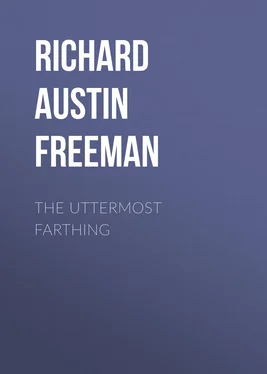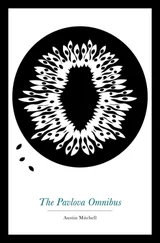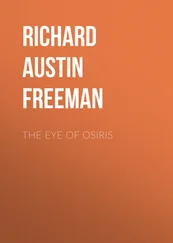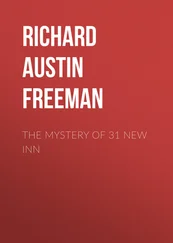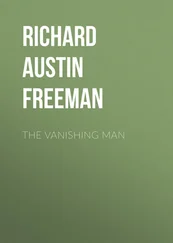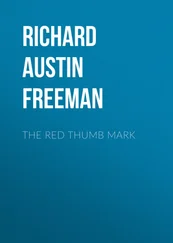Richard Austin Freeman - The Uttermost Farthing
Здесь есть возможность читать онлайн «Richard Austin Freeman - The Uttermost Farthing» — ознакомительный отрывок электронной книги совершенно бесплатно, а после прочтения отрывка купить полную версию. В некоторых случаях можно слушать аудио, скачать через торрент в формате fb2 и присутствует краткое содержание. Жанр: foreign_prose, Классический детектив, foreign_detective, foreign_antique, на английском языке. Описание произведения, (предисловие) а так же отзывы посетителей доступны на портале библиотеки ЛибКат.
- Название:The Uttermost Farthing
- Автор:
- Жанр:
- Год:неизвестен
- ISBN:нет данных
- Рейтинг книги:3 / 5. Голосов: 1
-
Избранное:Добавить в избранное
- Отзывы:
-
Ваша оценка:
- 60
- 1
- 2
- 3
- 4
- 5
The Uttermost Farthing: краткое содержание, описание и аннотация
Предлагаем к чтению аннотацию, описание, краткое содержание или предисловие (зависит от того, что написал сам автор книги «The Uttermost Farthing»). Если вы не нашли необходимую информацию о книге — напишите в комментариях, мы постараемся отыскать её.
The Uttermost Farthing — читать онлайн ознакомительный отрывок
Ниже представлен текст книги, разбитый по страницам. Система сохранения места последней прочитанной страницы, позволяет с удобством читать онлайн бесплатно книгу «The Uttermost Farthing», без необходимости каждый раз заново искать на чём Вы остановились. Поставьте закладку, и сможете в любой момент перейти на страницу, на которой закончили чтение.
Интервал:
Закладка:
"I turned this question over at length. Here was a specimen. But a specimen of what? I am no mere curio-monger, no collector of frivolous and unmeaning trifles. A specimen must illustrate some truth. Now what truth did this specimen illustrate? The question, thus stated, brought forth its own answer in a flash.
"Criminal anthropology is practically an unillustrated science. A few paltry photographs, a few mouldering skulls of forgotten delinquents (such as that of Charlotte Corday), form the entire material on which criminal anthropologists base their unsatisfactory generalizations. But here was a really authentic specimen with a traceable life-history. It ought not to be lost to science. And it should not be.
"Presently my thoughts took a new turn. I had been deeply interested in the account that I had read of the ingenious method by which the Mundurucús used to preserve the heads of their slain enemies. The book was unfortunately still in the museum, but I had read the account through, and now recalled it. The Mundurucú warrior, when he had killed an enemy, cut off his head with a broad bamboo knife and proceeded to preserve it thus: First he soaked it for a time in some non-oxidizable vegetable oil; then he extracted the bone and the bulk of the muscles somewhat as a bird-stuffer extracts the body from the skin. He then filled up the cavity with hot pebbles and hung the preparation up to dry.
"By repeating the latter process many times, a gradual and symmetrical shrinkage was produced until the head had dwindled to the size of a man's fist or even smaller, leaving the features, however, practically unaltered. Finally he decorated the little head with bright-colored feathers—the Mundurucús were very clever at feather work—and fastened the lips together with a string, by which the head was suspended from the eaves of his hut or from the beams of the council house.
"It was highly ingenious. The question was whether heads so preserved would be of any use for the study of facial characters. I had intended to get a dead monkey from Jamrach's and experiment in the process. But now it seemed that the monkey would be unnecessary if only the preparation could be produced without injuring the skull; and I had no doubt that, with due care and skill, it could.
"At daybreak I went down to the dining-room. The policeman was dozing in his chair; there was a good deal of cigar-ash about, and the whiskey-decanter was less full than it had been, though not unreasonably so. I roused up the officer and dismissed him with a final cigar and what he called an 'eye-opener'—about two fluid-ounces. When he had gone I let myself into the museum lobby. The burglar was quite dead and beginning to stiffen. That was satisfactory; but was he the right man? I snipped off a little tuft of hair and carried it to the laboratory where the microscope stood on the bench under its bell-glass. I laid one or two hairs on a slide with a drop of glycerine and placed the slide on the stage of the microscope. Now was the critical moment. I applied my eye to the instrument and brought the objective into focus.
"Alas! The hairs were uniformly colored with brown pigment! He was the wrong man.
"It was very disappointing. I really need not have killed him, though under the circumstances there was nothing to regret on that score. He would not have died in vain. Alive he was merely a nuisance and a danger to the community, whereas in the form of museum preparations he might be of considerable public utility.
"Under the main bench in the laboratory was a long cupboard containing a large zinc-lined box or tank in which I had been accustomed to keep the specimens which were in process of preparation. I brought the burglar into the laboratory and deposited him in the tank, shutting the air-tight lid and securing it with a padlock. For further security I locked the cupboard, and, when I had washed the floor of the lobby and dried it with methylated spirit, all traces of the previous night's activities were obliterated. If the police wanted to look over the museum and laboratory, they were now quite at liberty to do so.
"I have mentioned that, during the actual capture of this burglar, I seemed to develop an entirely alien personality. But the change was only temporary, and I had now fully recovered my normal temperament, which is that of a careful, methodical and eminently cautious man. Hence, as I took my breakfast and planned out my procedure, an important fact made itself evident. I should presently have in my museum a human skeleton which I should have acquired in a manner not recognized by social conventions or even by law. Now, if I could place myself in a position to account for that skeleton in a simple and ordinary way, it might, in the future, save inconvenient explanations.
"I decided to take the necessary measures without delay, and accordingly, after a rather tedious interview with the detective-inspector (whom I showed over the entire house, including the museum and laboratory), I took a cab to Great St. Andrew Street, Seven Dials, where resided a well-known dealer in osteology. I did not, of course, inform him that I had come to buy an understudy for a deceased burglar. I merely asked for an articulated skeleton, to stand and not to hang (hanging involves an unsightly suspension ring attached to the skull). I looked over his stock with a steel measuring-tape in my hand, for a skeleton of about the right size—sixty-three inches—but I did not mention that size was a special object. I told him that I wished for one that would illustrate racial characters, at which he smiled—as well he might, knowing that his skeletons were mostly built up of assorted bones of unknown origin.
Конец ознакомительного фрагмента.
Текст предоставлен ООО «ЛитРес».
Прочитайте эту книгу целиком, купив полную легальную версию на ЛитРес.
Безопасно оплатить книгу можно банковской картой Visa, MasterCard, Maestro, со счета мобильного телефона, с платежного терминала, в салоне МТС или Связной, через PayPal, WebMoney, Яндекс.Деньги, QIWI Кошелек, бонусными картами или другим удобным Вам способом.
1
The narrative seems to have been written in 1890.—L.W.
Интервал:
Закладка:
Похожие книги на «The Uttermost Farthing»
Представляем Вашему вниманию похожие книги на «The Uttermost Farthing» списком для выбора. Мы отобрали схожую по названию и смыслу литературу в надежде предоставить читателям больше вариантов отыскать новые, интересные, ещё непрочитанные произведения.
Обсуждение, отзывы о книге «The Uttermost Farthing» и просто собственные мнения читателей. Оставьте ваши комментарии, напишите, что Вы думаете о произведении, его смысле или главных героях. Укажите что конкретно понравилось, а что нет, и почему Вы так считаете.
